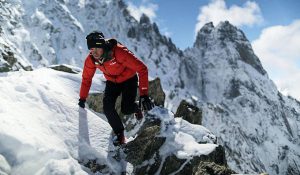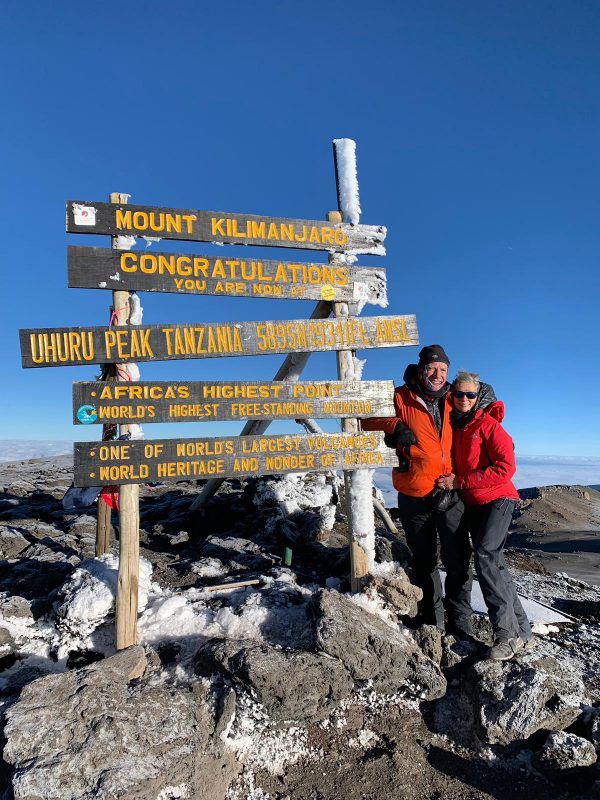For as long as the mountains have captured human imagination, they have been shrouded in mystery, myth & legend. Mallory himself was famously obsessed by the intrigue of the world’s highest peak, drawn to it time and again before ultimately becoming a part of the legend himself. Then there’s the yeti, or abominable snowman depending on your preference. Perhaps the most famous myth of the mountains, reports of some monstrous creature roaming the Himalaya, leaving only footprints in its wake have attracted global interest for centuries. Perhaps then there are some mountain myths about which we are destined never to know the truth. Did Mallory make the summit on his 1924 Everest Expedition? Is the Yeti real? And if not, how can the sightings be explained?

However, as mountaineering has evolved over time, there are some myths that we’ve been able to disprove. Specifically, there have been long held beliefs in mountaineering circles that it is neither possible to predict nor prevent the onset of altitude sickness, at least not without a significant period of time spent testing individual responses to altitude and acclimatising while on expedition. Now, with access to simulated altitude, both of these can be done quickly and easily without having to tag weeks onto your high altitude trek. To take a look at how you should prepare for high altitude, we’re going to go myth busting.
Myth 1: Altitude sickness is random, we cannot predict it before heading to the mountains.
Truth: We can predict who might be susceptible to altitude sickness.
Until recently, it’s been difficult to predict who might be most at risk of developing altitude sickness. For example, neither fitness, age nor gender appear to influence the response to altitude. However, research has shown that the extent to which blood oxygen saturation drops when you’re exposed to a low oxygen environment is predictive of an individual’s likelihood of developing altitude sickness. We’ve taken this knowledge and put it into practice in our Mountaineering Consultation.

The Mountaineering Consultation is your first step in your preparation for high altitude. During your session, our sport scientists will first guide you through some important health tests to check for underlying conditions that might make your time at altitude harder. We then get to the altitude testing itself. We test at a range of simulated altitudes up to 6,000 m, both passively and while you exercise, so that we can build a comprehensive picture of your susceptibility to low oxygen environments. Throughout, your heart rate and blood oxygen saturation is tracked, and the data we record compiled into your consultation report to detail your response and inform your training going forward. Not only does the session provide important information to guide the next step of your preparation, but it also allows you the opportunity to experience just what it feels like to be at extreme altitude before you head off to the mountains.
Myth 2: You cannot prepare the body for high altitude without going to the mountains.
Truth: In the words of Barrack Obama, yes, we can!
In time gone by, the only way to acclimatise to high altitude was spend time in the mountains. Lots of time. Fortunately, things have moved on from the days of reindeer skinned boots, tweed climbing jackets and Kendal mint cake. These days, research-based training methods are implemented by applied sport scientists according to the principles taken from the world of elite sport, meaning we can train smarter and pre-acclimatise before even arriving at high altitude – and it helps to make for a much more enjoyable trip!

Kilian Journet accumulated almost 300 hours at altitude before setting the fastest known time to summit Everest, by combining sleeping in an altitude tent with exercise at simulated altitudes up to 6,000 m before arriving in the Himalaya.
Once your individual level of susceptibility to altitude has been determined, the next step in your preparation for altitude is doing something about it. We’ve been using simulated altitude to prepare climbers for decades, helping thousands of would-be high altitude trekkers, from those looking to their first foray to altitude or planning an attempt to summit Everest itself. Everyone’s pre-acclimation plan will be different, to meet the demands of the challenge ahead, while taking into consideration the findings from the initial consultation. Generally, however, training will start with exercise at 2,700 m, to improve fitness by building that all important strength and muscular endurance. A combination of strength or circuit training, as well as cardio training at altitude is a great blend for all round trek specific fitness. As you progress through your training, the altitude starts to ramp up, and training starts to include passive exposures to altitudes of up to 6,500 m in a type of training called intermittent hypoxic exposure (IHE for short). These passive exposures train the central nervous system to cope with the lack of oxygen you’ll face at high altitude, and are key in pre-acclimatising. Nearer the date of departure, your training will start to combine both exercise and high altitude: get your walking kit on and train on our treadmills at severe altitudes, replicating exactly what you’ll be doing on your trek. This specific training is the perfect way to top off your preparation for altitude.
Not able to make it to our London HQ to train? Check out our at home rentals here.
Research has shown that 6 weeks of combined exercise at altitude and IHE improves altitude tolerance by 49% on average, and improves the response to altitude by 13%. What’s more, exercise performance improved by 22% and lower body endurance by 64%, meaning not only were our climbers more prepared for the altitude, but for the physical challenge of trekking at high altitude. In all, improved fitness and altitude tolerance lead to a greater enjoyment and success on the climb itself, which is what it’s really all about for these once in a lifetime experiences.

Rachel Ewer rented altitude training equipment for at home training in 2019: “We stormed the summit with no symptoms whatsoever, no headaches, nausea, fatigue… We ate and slept well and our guides were pleased with our health checks. We were the oldest by 25 years in a team of 9 and felt the best; feeling quite smug right now!”
To learn more about the mountaineering consultation or our altitude training services click through here, or get in touch with the team!
